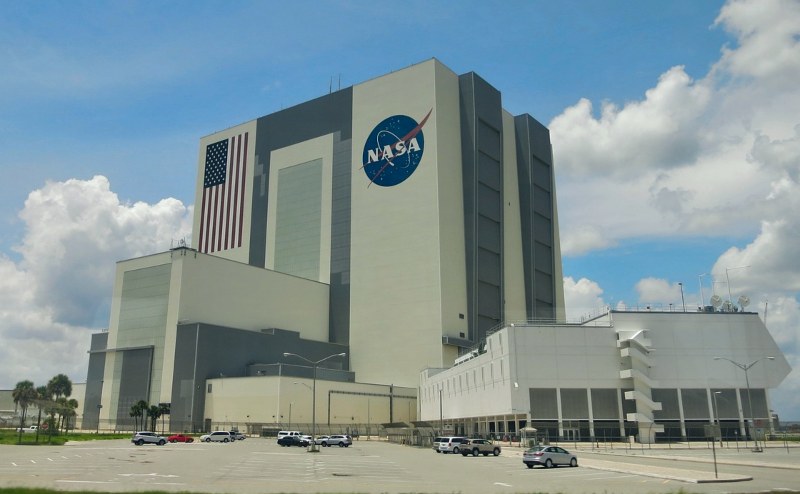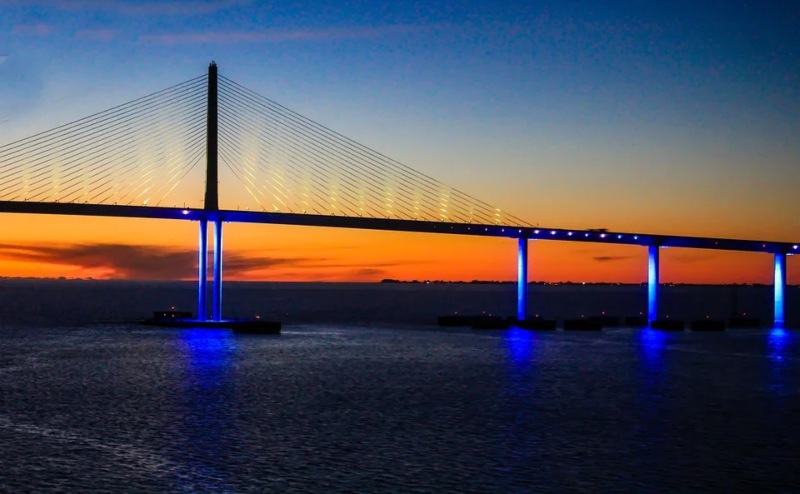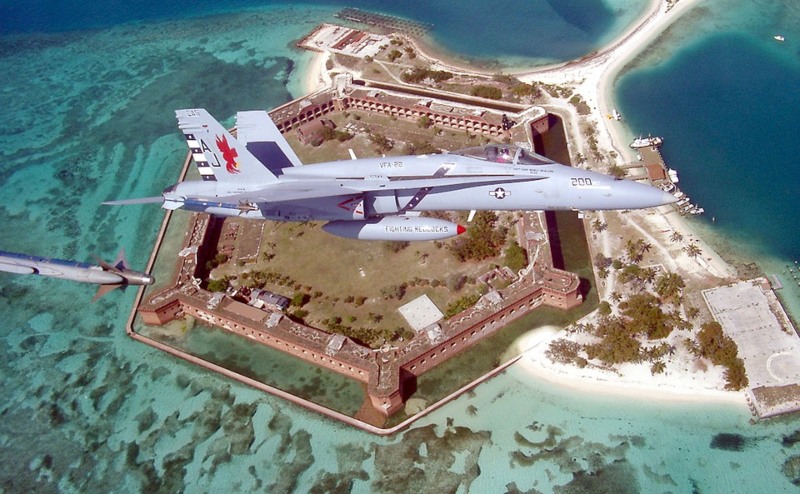We’ve already listed what we think are The Seven Natural Wonders of Florida, and now it’s time to tackle the manmade. The engineering marvels, the historical wonders, and the theme park attractions that draw so many people here each year. On our Florida travel podcast, Sunshine State of Mind, we discussed and debated our picks for the Seven Manmade Wonders of Florida, and here’s where we landed. Do you agree with our list? Let us know!
Kennedy Space Center

The space program could easily be considered one of all of the great manmade wonders of the entire planet, and we’re lucky enough to have Kennedy Space Center right here in Florida. This place is a major part of American history, American Pride, and it’s an honor that we Floridians get to share it with the world.
The Vehicle Assembly building is one of the largest buildings in the world by volume at 129,428,000 cubic feet. And at 526 feet it’s the tallest building in the world outside of an urban area. Yankee Stadium could even fit on the roof! The American Flag on the side of the building is 209 feet high and 110 feet wide. Each star is six feet across. Each stripe is nine feet wide. It’s a MASSIVE building.
As a launch site, Kennedy Space Center is just as busy as ever. The Space Shuttle program may have been retired, but SpaceX is launching stuff from here all the time. NASA is also getting ready to take it’s next generation of manned spacecraft for a spin from Kennedy Space Center too. Launch dates are a great time to visit, but can also be really busy. There’s also the chance a launch will get scrubbed due for weather reasons, so it’s best to visit with the mindset that you hope to see a launch up close, but will still have a great day if plans change.

When visiting here make sure you don’t miss the bus tours of the launch pads. It’s a big part of the experience, and it’s the only way to get to the Apollo program museum, which is a must-do part of the center. The Space Shuttle Atlantis exhibit is goosebump-inducing, and the space flight simulator ride here is surprisingly great for thrill-seekers.
Castillo de San Marcos

The iconic structure of St. Augustine. The Castillo de San Marcos is the oldest masonry fort in the continental United States and the oldest building in Florida. If you’re visiting St. Augustine, and only have enough time to do one thing, a visit here can’t be missed.
Construction of the fort took place from 1672 to 1695 when Florida was still part of the Spanish Empire to defend the city after a raid by the English privateer Robert Searles in 1668. It was a devasting blow that destroyed much of what was St. Augustine at the time. The Castillo de San Marcos was attacked several more times, mostly by British invaders, but was never taken by force. The scars of battle can still be seen in its coquina stone walls today. Possession of the fort has changed six times though, all peacefully, by four different governments: Spain, the Kingdom of Great Britain, Spain again, the United States of America, the Confederate States of America, and then finally back to the USA again after the Civil War.
This a fascinating place to visit, and you can just feel the echos of all of it’s wild history while touring the fort, imagining what it must have felt like to live here hundreds of years ago.
Sunshine Skyway Bridge

The largest bridge in Florida was once the longest cable-stayed concrete bridge in the world when it was completed in 1987. The Travel Channel rated the bridge as one of the top ten in the world, and this awe-inspiring structure has become one of the visual symbols of the state.
The 4-mile long bridge crosses the mouth of Tampa Bay connecting St. Petersburg to Terra Cierra by way of a 1,200 foot main span that passes 94 feet over the water below. The famous bright yellow cables reach 430 feet into the air, and it’s lit up spectacularly at night.
Crossing the bridge by car can be a lot of fun, or terrifying if you’re a bridge-a-phobe. The main span is steep, can be a little sketchy during high winds, but offers a fantastic view from the top.
Fort Jefferson

Fort Jefferson isn’t as well known as the Castillo de San Marcos in St. Augustine, but is even bigger and placed in a dramatically beautiful locale in the Florida Keys. This massive brick fortress covers 16 acres, is made out of 16 million bricks, and is the largest brick masonry structure in the Western Hemisphere. The fort was built on Garden Key in 1861. It’s massive, gorgeous, and kind of hard to reach. Located nearly 70 miles west of Key West in Dry Tortugas National Park, it’s only reachable by boat or seaplane, so you really need to be dedicated to visiting here. The effort though is well worth it. Those who make the journey out to Dry Tortugas National Park and Fort Jefferson will find crystal clear blue seas, unspoied coral reefs, and one of the least visited parks in the National Park system.
Miami’s Art Deco District

Close your eyes and picture what comes to mind when somebody says the word “Miami”. There’s a great chance your mind went right to the funky neon-soaked architecture of Miami’s art deco district.
This is classic Florida architecture from the 1920s and ’30s when Miami Beach was a booming seaside resort town attracting sunseekers from all over the world. Today it’s still a district full of rounded corners, neon lights, etched glass, porthole windows, relief sculptures, glass bricks and flashy pastels. It’s the postcard of classic Florida.
South Beach is home to the nation’s largest collection of Art Deco buildings with about 650 “significant” buildings, in the lingo of architecture geeks. Miami’s art deco district makes the National Register of Historic Places and is just as great a place for people watching as it is for admiring the fun retro buildings. This is a place where the “see and be seen” crowd flocks. Don’t miss it at night. This part of town really pops when the sun goes down, and the neon shines.
Walt Disney World’s Magic Kingdom

Central Florida would likely have never become the epic tourist destination it is today had Walt Disney not selected this humble patch of swampland to build his theme park empire. Everything else; SeaWorld, Universal Studios, and every other Disney park in Florida can trace its roots right here. Walt Disney wanted this park to be a transformative experience for his guests. A place where you could visit and be totally transported out of the real world, and into a place of fantasy. Making this a reality involved building a lake, new hotels, the monorail system, and the famous utilidor system all to support the new park. It was a huge undertaking.
Walt Disney, and his team of designers, wanted an underground network of tunnels and workspaces where employees could move around the park without ever being seen to help preserve the immersive atmosphere. Just this idea alone became something of an engineering marvel and a manmade Florida wonder. Because of Florida’s high water table, this utilidor system was built at ground level, and the theme park built on top. The Seven Seas Lagoon, the lake that guests cross in ferry boats to reach the park, was built out of necessity. All of the dirt that was excavated was used to create the extra elevation needed on which the park was built.
On top that mound of dirt they built the worlds most visited theme park, with rides & attractions that have become beloved classics since opening day on October 1, 1971.
Universal’s Wizarding World of Harry Potter

If Disney World’s Magic Kingdom was the place that really sparked Central Florida’s tourism boom, it was Universal who took it to the next level. Themed lands in the parks are nothing new. They are called theme parks after all. But we’ve never seen anything approaching the level of total immersion and attention to detail that came when Universal opened “Hogsmead”, the first phase of the Wizarding World of Harry Potter at Universal’s Islands of Adventure in 2010.
Harry Potter fans were absolutely blown away by what Universal had done with this new land devoted to their favorite book and film franchise. Everything from the entrance gate, the storefronts, the food, and the costumes were absolutely spot-on perfect. When visiting here, you are apparated away from Orlando and into the Wizarding World. No other themed land had achieved such a deep state of immersion before. Then, of course, there is the epic sight of Hogwarts castle sitting high atop a cliff looking down on the scene below. The castle was not only an incredible icon for the park, but it serves as part of the show building for the big attraction here; the groundbreaking “Harry Potter and the Forbidden Journey”. A sort of a hybrid of a dark ride and motion simulator that blew our minds when it first opened. The theming doesn’t stop at the entrance either. The line to the ride takes you on tour through every tiny detail of Hogwarts.
From here Universal would go on to build the equally amazing Diagon Alley over at the original park, and then connect the two lands via the Hogwarts Express. Nothing like this had ever been done, and Disney noticed. Shortly after, Disney launched into their completely over-the-top Star Wars: Galaxy Edge project, which took totally immersive theming even further. What Disney has done with Star Wars is arguably even more impressive than Universal’s Wizarding World, but without Universal’s big and bold move to bring it to life in the first place, it’s possible that Galaxy’s Edge would never have become a reality. When these two Orlando theme park juggernauts keep trying to outdo and push each other, we all win!
